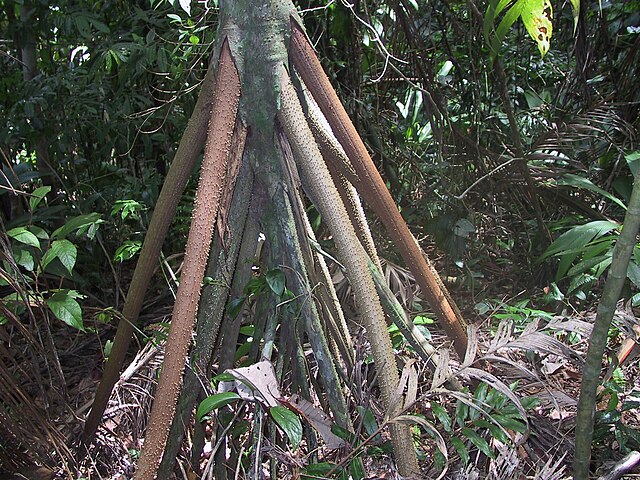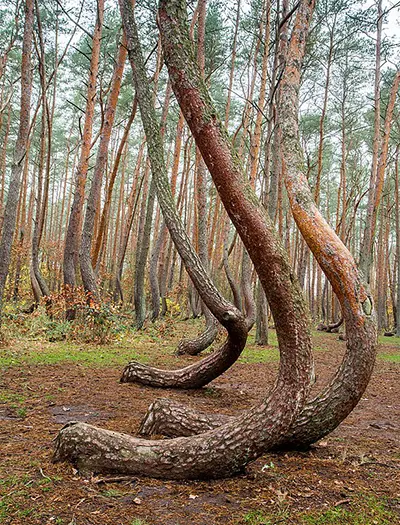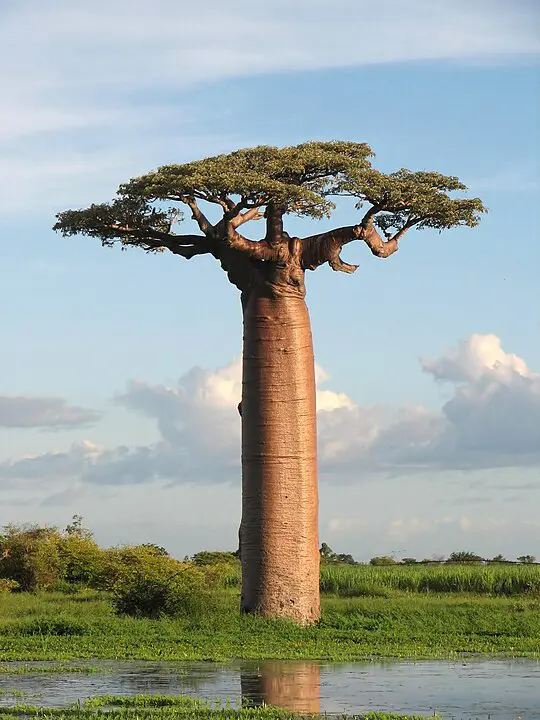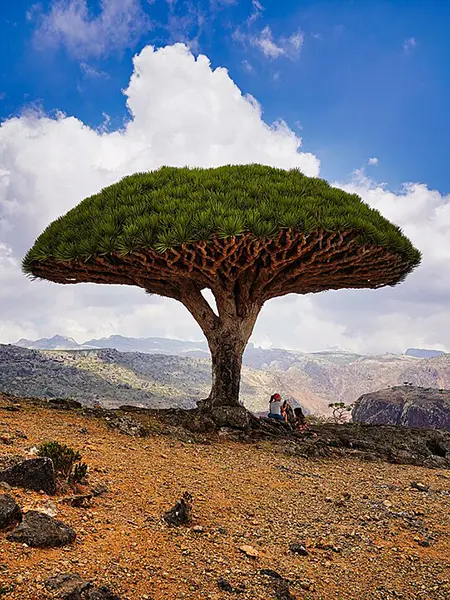Walking Palm Tree – The Amazing Tree in the Rainforests, Socratea exorrhiza
You may be surprised to hear that there are trees in this world that can walk. Yes, there is a very special tree in the rainforests of Central and South America which many people call the walking palm tree. Its scientific name is Socratea exorrhiza.
The way this tree grows is very strange and interesting, which makes it seem like it can walk. Today we will explore the story of the walking palm tree in the rainforests and find out how true this story of the walking tree really is.
What is the Walking Palm Tree?
The walking palm tree in the rainforests is a tall, slender tree that grows in tropical rainforests. It can grow up to 75 feet tall, which is around 23 meters. Most of these trees are between 15 to 20 meters tall. They are not very wide, only about 12 centimeters in diameter, but they have a very unique feature that makes them famous.
What Does the Walking Palm Tree Look Like?

(Photo: CC BY-SA 2.5)
What makes this tree really special is its roots. Unlike other trees, the walking palm tree’s roots do not all grow underground. Instead, many of its roots grow above the ground. These long, thin roots stretch out from the base of the tree and reach down into the soil. They look like long legs, which is why many people say the tree looks like it is standing on stilts. Some even say it looks like an upside-down broom because of its many leg-like roots.
How Does the Walking Palm Move?
The walking palm tree is believed to move in search of sunlight. In dense rainforests, sunlight is very limited because so many trees grow close together. The walking palm tree needs sunlight to survive, so it has a clever way to reach it.
The stilt roots of the walking palm tree play a key role in its movement. When the tree senses that there is more sunlight in a nearby spot, it starts growing new roots in that direction. At the same time, the old roots behind the tree slowly die and disappear. This process looks like the tree is moving from one place to another.
For example, if there is more sunlight a few meters away from where the tree is standing, the tree grows new roots toward the sunlight. The tree’s trunk follows these new roots, and the old roots slowly lift into the air and die off. Over time, the tree’s position shifts, giving the appearance that the walking palm tree is slowly walking across the forest.
How Far Can the Walking Palm Tree Move?
It is said that the walking palm tree moves about 2 to 3 centimeters per day, meaning it can move about 1 meter in a month. In an entire year, it can move about 20 meters in search of and in the direction of sunlight. During this movement, the tree grows new roots towards the light, while its old roots gradually die.
Is the Walking Palm Tree Really Walking?
While the story of the walking palm tree in the rainforests is very popular, many scientists do not fully agree with it. According to some botanists and researchers, the tree’s movement is not really “walking.”
What is actually happening is part of the tree’s natural growth process. Trees always grow toward the best source of sunlight and nutrients. The walking palm tree’s unique roots simply allow it to adjust its position slightly over time. Since this process is very slow, and some scientists say the tree’s movement is too slow to be called walking.
The truth is, the tree does not walk like humans or animals, but it does gradually shift over time by growing new roots and letting old roots die. It is more like a gentle crawl than a proper walk.
Why is the Walking Tree Special?
Even though the walking tree in the rainforest doesn’t actually move, it is still a very special and unique tree. Its structure is different from others, and its above-ground roots help it survive in the soft, wet soil of tropical rainforests.
Most trees struggle to grow in such soil, but the vertical roots of the walking palm tree provide extra support and stability. These roots also help the tree adapt to changes in its environment. If the soil erodes or if a nearby tree falls and blocks sunlight, the walking palm tree can slowly relocate to a better location. This ability to adjust and survive in the challenging environment of tropical rainforests is very important.
Importance of the Walking Tree
This walking tree in the rainforest is not just a curiosity for tourists and scientists. It is also an important part of the rainforest ecosystem. The tree provides shelter for small animals and insects, and its roots help hold soil in place, reducing erosion. The tree’s fruits and leaves are also part of the food chain, nourishing wildlife in the forest.
In addition, the walking palm tree helps scientists understand how plants adapt to difficult environments. Studying this tree can teach us more about how trees find sunlight, how they manage their roots, and how they interact with the environment around them.
SUMMARY
The walking palm tree in the rainforests is a fascinating and mysterious plant. Whether it really walks or just slowly shifts its position, it is an amazing example of how nature adapts to challenges. Its unique stilt roots and gradual movement make it one of the most unusual trees in the world.
Even if scientists debate whether it is truly walking, the walking palm tree continues to inspire stories, research, and curiosity. Nature is full of wonders, and the walking palm tree is just one of the many secrets hidden in the lush green rainforests of our planet.
Other Mysterious and Weird Trees in the World
The walking palm tree is not the only tree with strange and fascinating characteristics. All around the world, there are trees with unusual shapes, colours, and behaviors that seem almost magical. Here are some of the most mysterious and weird trees found in nature.
The Crooked Forest (Poland) – A Forest of Bent Trees

(Photo: Michał Słupczewski)
In western Poland, there is a small grove of about 400 pine trees, all bent at the base into a strange curved shape. Instead of growing straight up, their trunks form a 90-degree angle before bending back toward the sky.
Why Are the Trees Bent?
The exact cause of this strange shape is unknown. Some theories suggest that humans may have manipulated the trees for wood bending, while others believe that natural factors such as heavy snow, strong winds, or soil shifts may have affected their growth.
The Baobab Tree

(Photo: Bernard Gagnon)
The Baobab tree is found primarily in Madagascar and mainland Africa. It is one of the most unique trees in the world and is often referred to as the “upside-down tree,”. It has a thick, bottle-shaped trunk that can store thousands of liters of water. This helps it survive in harsh, dry climates.
How Long Can a Baobab Tree Live?
Baobab trees are some of the longest-living trees, with some specimens estimated to be over 3,000 years old. These trees are found in Africa and Madagascar and are important in many local cultures for their medicinal and spiritual significance.
The Dragon Blood Tree

(Photo: CC BY 4.0)
The Dragon Blood Tree is famous for its umbrella-like canopy and deep red sap that resembles blood when cut. This unique tree grows only on Yemen’s Socotra Island and is adapted to the harsh desert conditions.
Why is it called the Dragon Blood Tree?
This is because it produces a blood-red colour sap that has been used for centuries as medicine, dyes, and even in ancient rituals. Some legends say that this tree is magical because of its “blood,” which is believed to have healing powers.
References
- The Mystery of the Crooked Forest, Discovery
- Dracaena cinnabari, Wikipedia
- Baobab Tree Genus, Britannica




